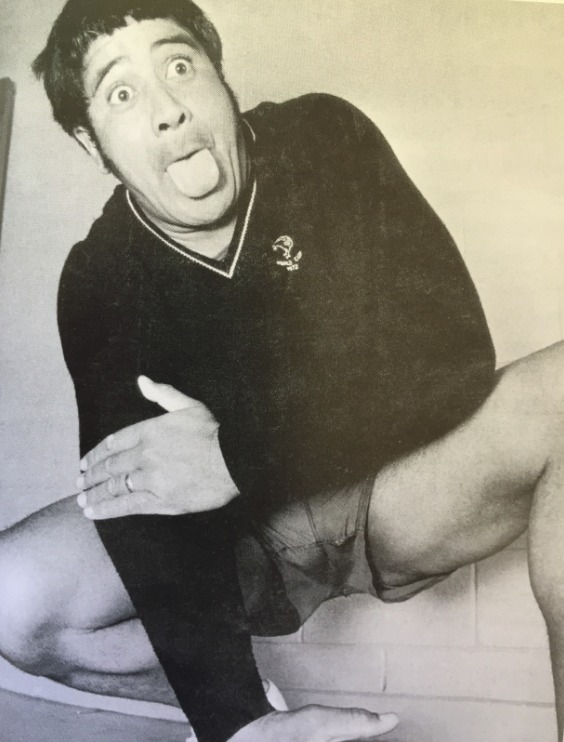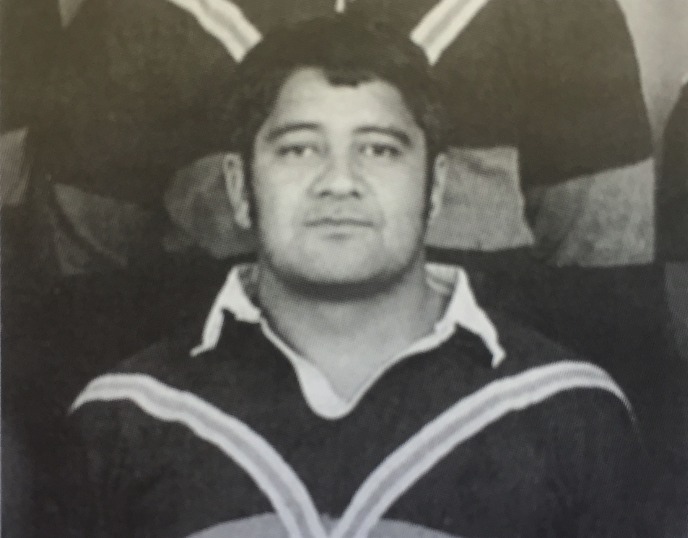Vale Mita Mohi

Canterbury Rugby League is mourning the loss of one its longest-serving players and greatest exponents of front-row play, as well as one of its much-loved characters, following the peaceful passing of former Kiwi Mita Mohi in Rotorua on Sunday.
After moving south as a teenager, Mohi represented Cantebury 43 times from 1960-73 during premier club stints with Marist (1960-64, 1966-74) and Papanui (1965), while he also spent three seasons with Riccarton, the last as a player-coach.
One of the country’s most prominent prop-forwards, he received a belated Kiwis call-up for the 1972 World Cup tour, playing his only Test against France in Marseille.
Mohi turned out for South Island in a historic victory over the South African tourists in Christchurch in 1963 and in a further three interisland matches, and played for New Zealand Maori against Great Britain in 1962 and Auckland in ’72.
The Te Arawa kaumatua is equally revered for his work in the community after returning to his native Bay of Plenty. Working with Sir Howard Morrison for a time and becoming a justice of the peace, Mohi and his late wife, Hukarere, opened Rotorua’s first kōhanga reo in 1982.
In the late-1970s, Mohi began teaching the art of traditional Maori weaponry, mau rakau, and established the Mokoia taiaha wanaga, which has trained over 20,000 people in the use of the taiaha, during the 1990s. He travelled to share his knowledge of the Maori art with iwi throughout New Zealand.
Also serving on marae committees, school trust boards, the Parole Board and as kaumatua for the police, Mohi was awarded MBE in 1995 for his services to youth.
His contribution to Maori culture was recognised again in 2012 at the Waiata Māori Music Awards, when he received the Keeper of Traditions Award.
“He was a beautiful man and a gentle giant who helped so many young people, many of whom were at risk,” his cousin, Rotorua councillor Trevor Maxwell, told Radio NZ.
Mt Mohi’s mau rakau camp on Mokoia Island took rangatahi away from the negative influences of the city and instilled a pride in Maori culture, Maxwell said.
“He treated them all equally and put them on the right path with the taiaha wananga he used to run on Mokoia Island.”
—–
Celebrated rugby league journalist, author and historian John Coffey – who was a Marist teammate of Mohi’s before retiring to concentrate on his job with The Press – remembers him fondly, as a player and a person.
“He was great to play alongside – he was a big bugger and I was the smallest bloke on the field, so I didn’t mind playing with him,” Coffey recalled.
“Off the field, he was a hell of a nice guy – quiet, polite. A non-drinker and non-smoker, which was a bit unusual in those days, and he was an engine driver in the railways.
“On the field, he was a very strong forward. He was the kind of guy you liked to follow because he often able to break tackles.
“He seemed to have legs the size of logs.”
Coffey said that Mohi’s amiable nature may have held him back in the eyes of the national selectors, but that his eventual call-up in 1972 was well overdue.
“I think at a higher level I think was a bit to gentle for his own good,” Coffey explained.
“He was unlucky that he didn’t make the Kiwis team to tour Britain and France in 1965; he was certainly in contention, but he lacked that little bit of extra aggression they were looking for.
“He was probably a little past his best (when he was selected for the Kiwis).”
The veteran’s Test debut didn’t all according to plan, however, ultimately forced from the field during New Zealand’s 20-9 loss to France at Stade Velodrome.
“There’s of course the famous story that he injured a hamstring during the haka at that World Cup – he bloody hates that,” Coffey said.
“He wasn’t happy when I mentioned it a couple of times!
“But he deserved to be a Kiwi, it just seemed to be a bit too late.
“Through the 1960s he was one of the best forwards in New Zealand without a doubt.”
While his Kiwis tenure was short-lived, Mohi’s incredible longevity at representative level to play 42 matches in the red-and-black jumper puts him in exalted company in Canterbury’s rugby league history.
“It was a long time before anyone made it to 50 (appearances), so if you got to 40 it was regarded as a lot in those days,” Coffey said.
“You’d only be playing four or five interprovincial matches each year on average, so you’d have to play for eight to 10 years to get there.
“He was always available to play football, he loved football, Mita.
“He was a real good bloke, a legend of the Marist club and among the most often selected for Canterbury in the era.”
Mohi’s sporting prowess wasn’t restricted to the rugby league fields, either. Utilising his imposing frame as a professional wrestler, he was also dexterous and nimble enough to finish runner-up in the 1972 Aotearoa Maori Tennis Championships.
“Mita was liked by all, team-mates and opposition players alike,” legendary Canterbury and Marist rugby league identity Bill Whitehead said of his late friend, who represented New Zealand Marist on three occasions.
“Mita was everyone’s friend. He played hard, but afterwards, all were mates. He was a gentle giant, that’s for sure.”
He is the third kaumatua from Te Arawa to die in just two weeks, following the deaths of Napi Waaka and Fred Whata.
Mohi will be taken to Tarimano Marae at Te Awahou at 1pm Monday, November 21. His rā nehu has been confirmed for Thursday, November 24 at 11am. He will then be taken to Puhirua urupā where he will be laid to rest.
WILL EVANS – CANTERBURY RUGBY LEAGUE with Rotorua Daily Post, Radio NZ and Maori Television.

